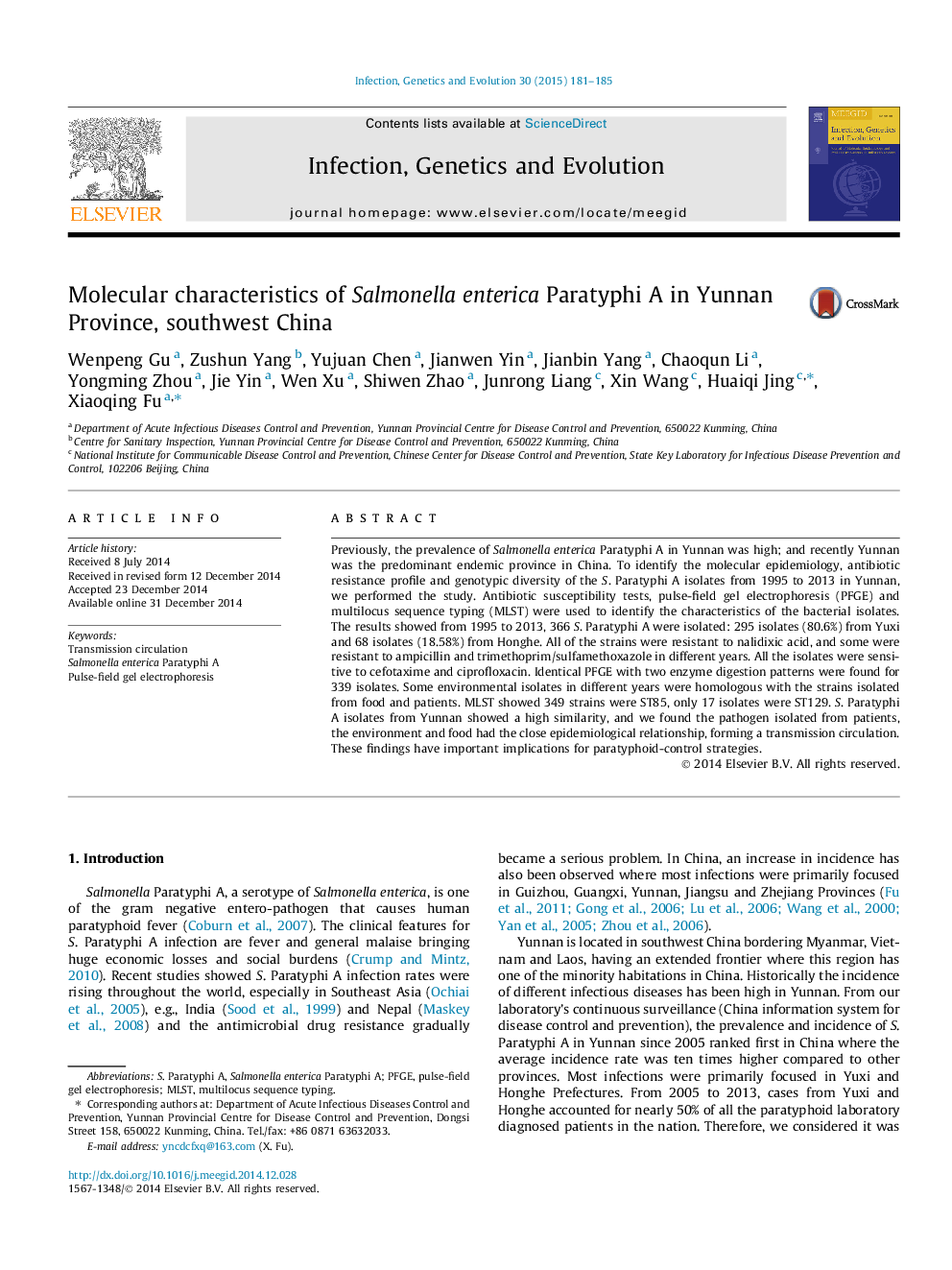| Article ID | Journal | Published Year | Pages | File Type |
|---|---|---|---|---|
| 5908813 | Infection, Genetics and Evolution | 2015 | 5 Pages |
â¢All the S. Paratyphi A were resistant to nalidixic acid in Yunnan.â¢All the strains were sensitive to cefotaxime and ciprofloxacin.â¢92.62% of S. Paratyphi A showed the highly homologous by PFGE results.â¢The bacteria isolated from patients, environmental and food had close relations.
Previously, the prevalence of Salmonella enterica Paratyphi A in Yunnan was high; and recently Yunnan was the predominant endemic province in China. To identify the molecular epidemiology, antibiotic resistance profile and genotypic diversity of the S. Paratyphi A isolates from 1995 to 2013 in Yunnan, we performed the study. Antibiotic susceptibility tests, pulse-field gel electrophoresis (PFGE) and multilocus sequence typing (MLST) were used to identify the characteristics of the bacterial isolates. The results showed from 1995 to 2013, 366 S. Paratyphi A were isolated: 295 isolates (80.6%) from Yuxi and 68 isolates (18.58%) from Honghe. All of the strains were resistant to nalidixic acid, and some were resistant to ampicillin and trimethoprim/sulfamethoxazole in different years. All the isolates were sensitive to cefotaxime and ciprofloxacin. Identical PFGE with two enzyme digestion patterns were found for 339 isolates. Some environmental isolates in different years were homologous with the strains isolated from food and patients. MLST showed 349 strains were ST85, only 17 isolates were ST129. S. Paratyphi A isolates from Yunnan showed a high similarity, and we found the pathogen isolated from patients, the environment and food had the close epidemiological relationship, forming a transmission circulation. These findings have important implications for paratyphoid-control strategies.
